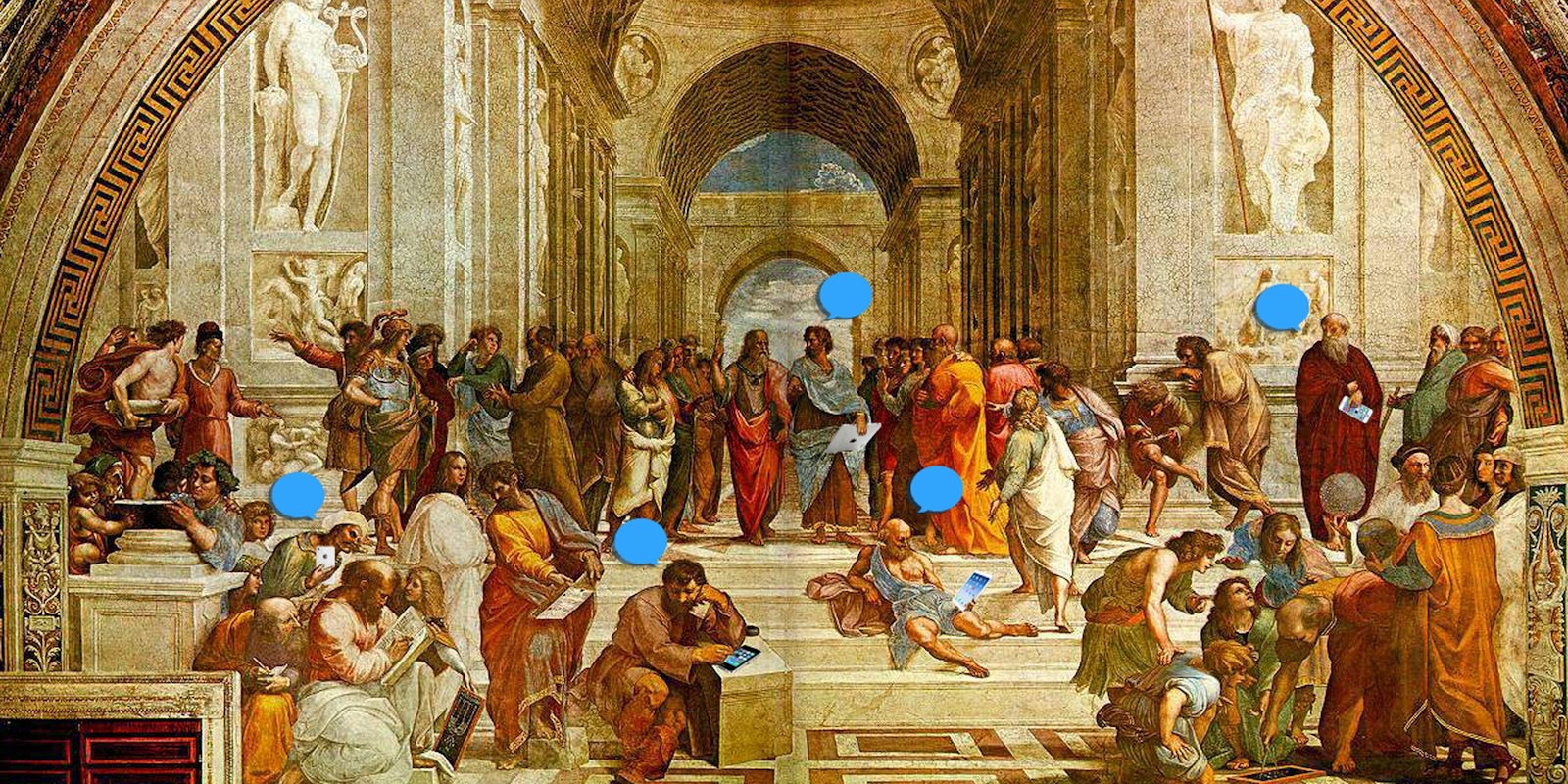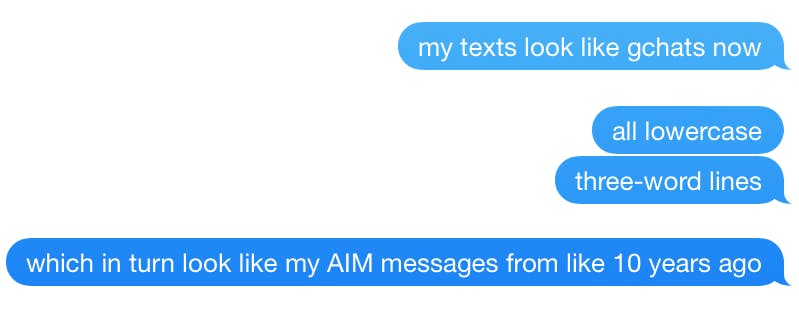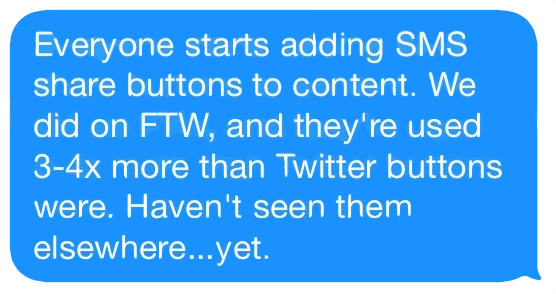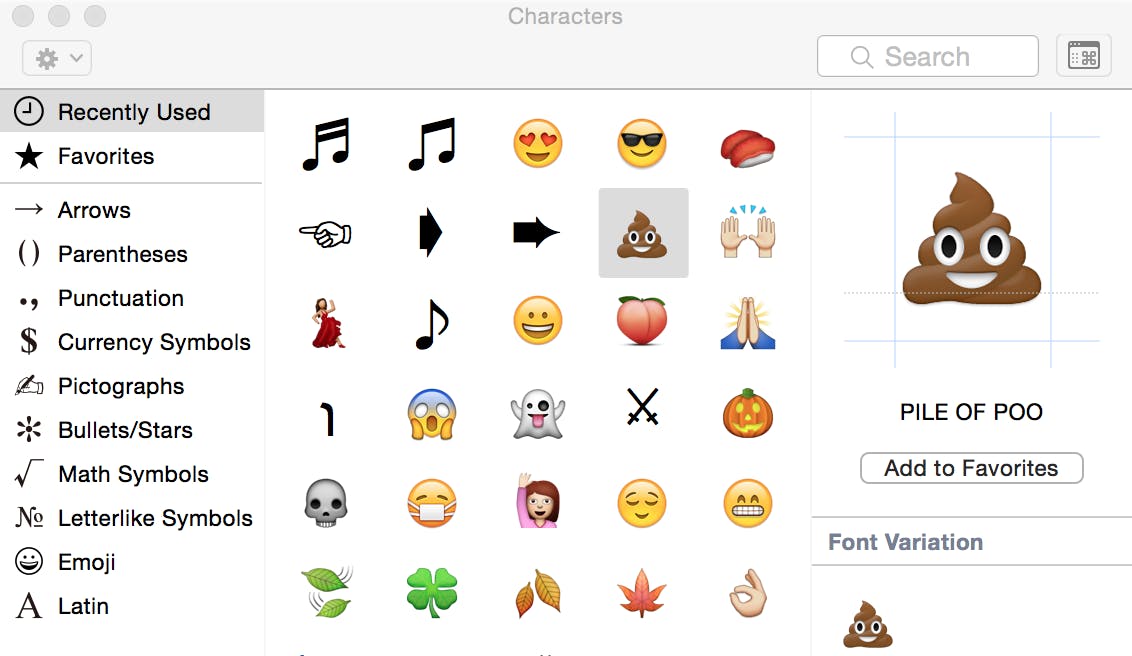Desktop texting is the new Gchat, and it’ll have major implications for how we share stories in 2015 and beyond. Prepare for a full-on SMS renaissance.
When I upgraded to Apple’s newest operating system, Yosemite, something strange happened to my texts—they started showing up on my laptop, too.
A subtle change, but significant: Texts have now become my primary form of communication throughout the day. At work, with my phone in my pocket or charging a few feet away, I’d grown reliant on Gchat and Twitter DMs for sending links and quick messages. The new Messages app gathers all of my non-Twitter chats into one window.
It’s easier than ever to send a barrage of texts, and I’ve found myself doing it 24/7.
The transition was far from seamless. Contacts were getting texts from four different versions of me before I realized I’d set up the wrong iCloud account as the default. Worse, I’d constantly text groups of people with messages meant for just one person. Oops.
Before long, nearly every one of my green Gchat conversations had become a blue text bubble. It was one big SMS party. I felt guilty about using SMS to send links and long-winded rants, assuming friends would have to peck out a response on their phones. But desktop texting feels natural now.
On NiemanLab, USA Today’s Jamie Mottram explains—in a text!—how SMS is already changing the way news is spread. In 2015, he predicts, sites will start “adding SMS share buttons to content. We did on [sports vertical] FTW, and they’re used 3–4x more than Twitter buttons were. Haven’t seen them elsewhere… yet.”
I’m sure that will change. Sharing links via text feels more personal. It’s more immediate than shooting friends an email they’re free to ignore.
In 2015, I wouldn’t be surprised if we saw apps like the upcoming BuzzFeed News embrace text updates, rather than alerts, for breaking stories.
I picture a condensed Today in Tabs–like text-only newsletter that sends a number of must-read links via SMS.
Twitter users could bypass the 140-character limit (and eradicate the reviled “tweetstorm” for good) by texting updates that get tweeted out as a friendly image of Helvetica text in a blue SMS bubble.
Thirsty brands would pay top dollar to text y— No, never mind. I don’t even want to put that thought out in the universe. Who knows what would happen.
@_Cooper: brands texting you on 9/11
— Eric Geller (@ericgeller) December 16, 2014
Then there’s another problem: emoji. The little cartoons became popular because they’re as easy to access as punctuation on your phone. They’re tougher to access on desktop. Fortunately, there’s a keystroke—control-command-space—that brings up the emoji library. Try it:
The great thing about SMS right now is that it’s a more intimate signal above the noise of email, HipChat work messages, and the river of info on Twitter. The text is old-fashioned and warmly familiar. There’s likely some subconscious tie here to our growing love of the retro Internet.
The thought of SMS slowly encompassing all communication is slightly uncomfortable. It feels weird to say I texted a friend when I frantically typed a message on my keyboard rather than tapping it out with two thumbs. The word “messaged” feels more natural—good branding, Apple.
It makes me want to reach further back in time and find more genuine ways of communicating with loved ones: smoke signals, maybe, or flag semaphore.
Even a phone call.
Painting by Raphael | Remix by Fernando Alfonso III





